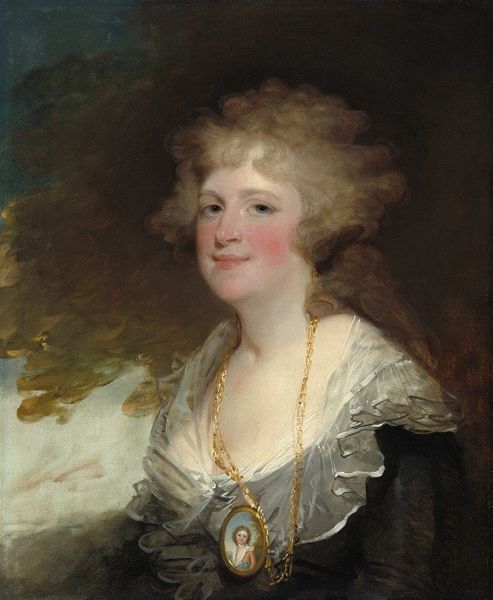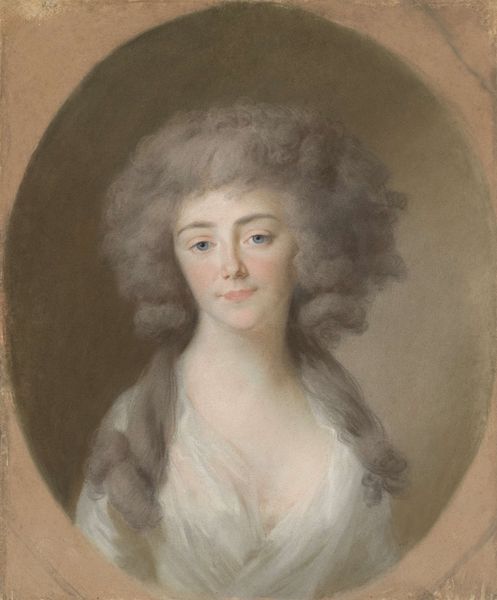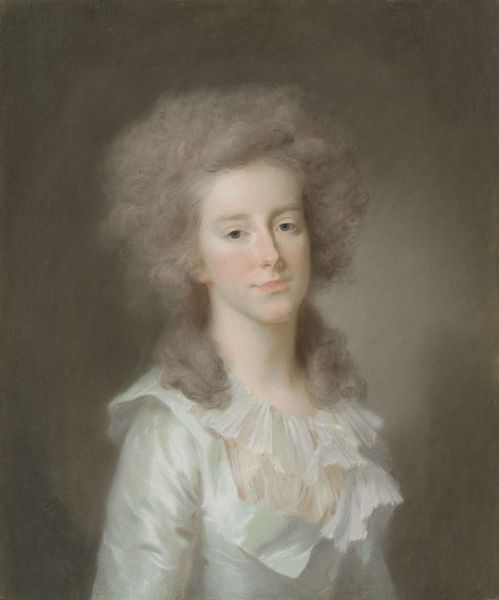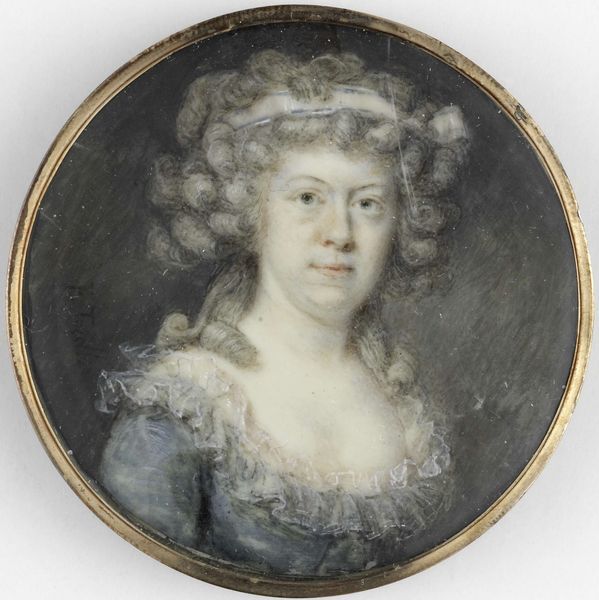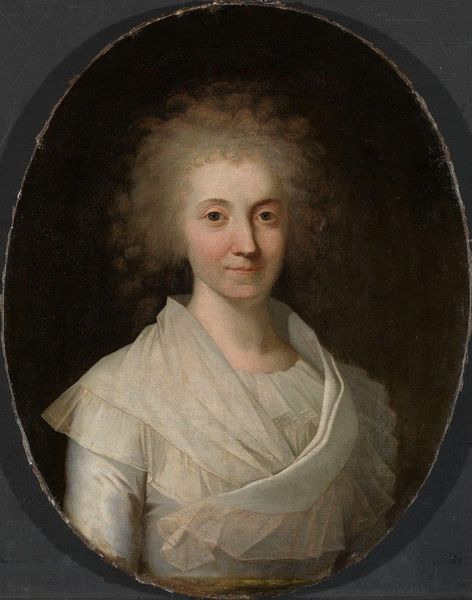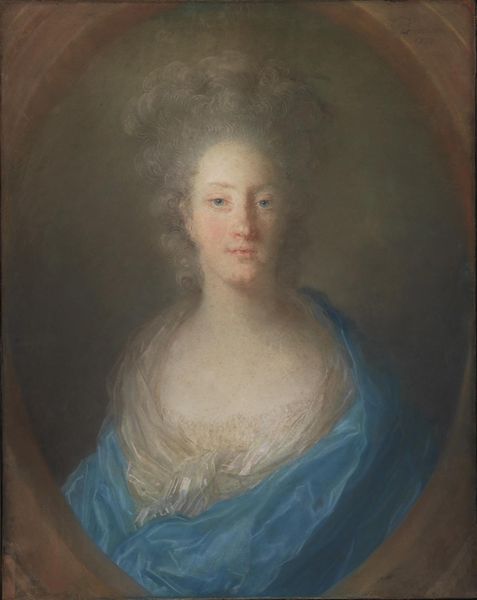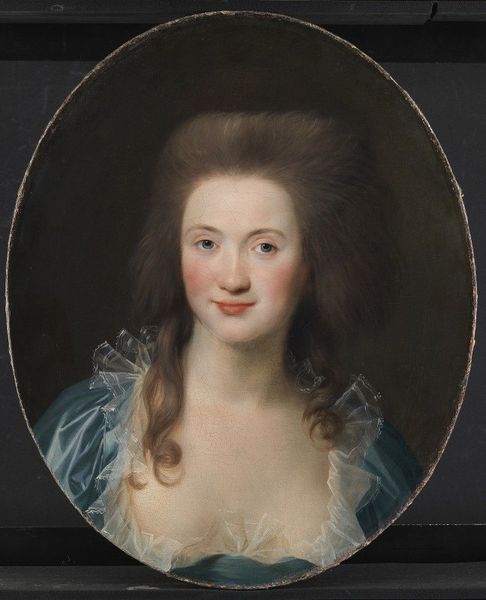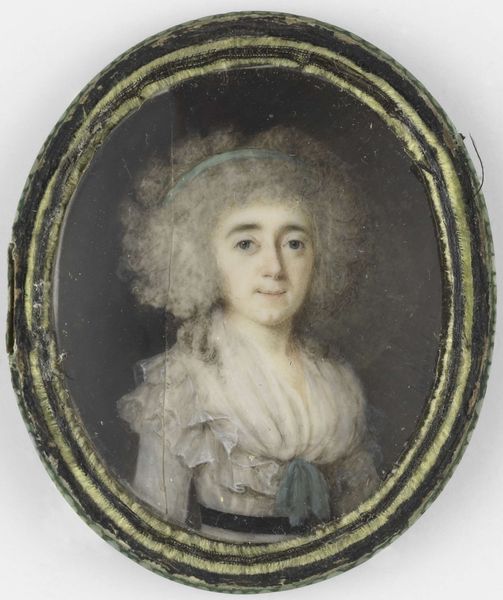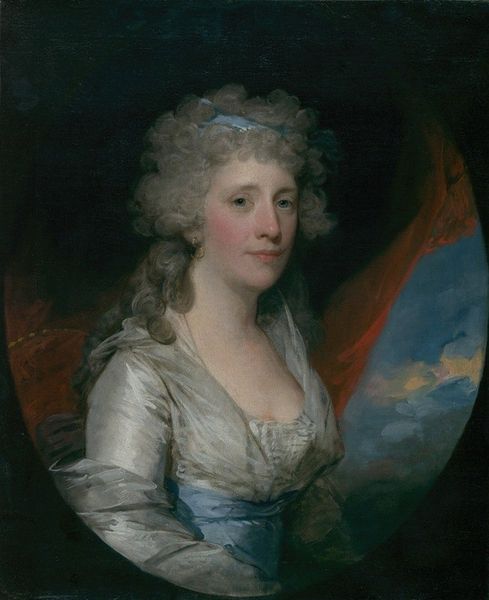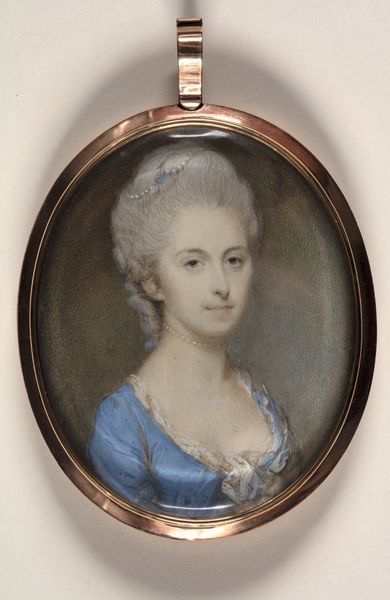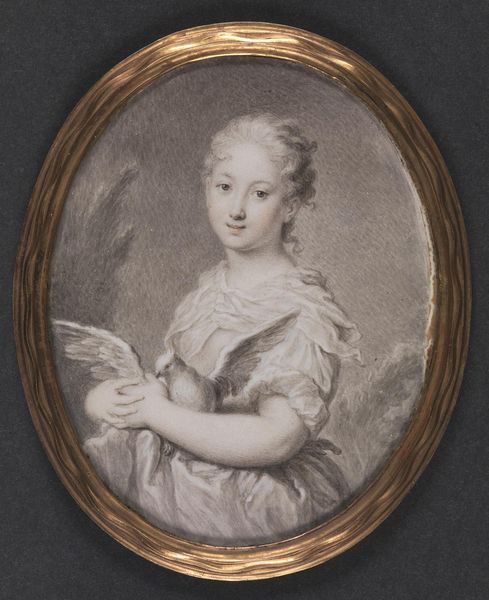
Portrait of Johanna Ferdinanda van Collen, Wife of Salomon Rendorp 1793
0:00
0:00
oil-paint
#
portrait
#
neoclacissism
#
character portrait
#
portrait image
#
oil-paint
#
figuration
#
portrait reference
#
portrait head and shoulder
#
portrait drawing
#
facial portrait
#
academic-art
#
portrait art
#
fine art portrait
#
celebrity portrait
#
digital portrait
Dimensions: height 68.4 cm, width 54.1 cm, thickness 3.4 cm, depth 8.5 cm
Copyright: Rijks Museum: Open Domain
Curator: Well, isn't she lovely? There's something almost ethereally gentle about this portrait. Editor: Indeed. We're looking at Johann Friedrich August Tischbein's 1793 oil-on-canvas work, "Portrait of Johanna Ferdinanda van Collen, Wife of Salomon Rendorp," held at the Rijksmuseum. I’m drawn to how the social and economic status of women is represented by portraiture in the late 18th century. Curator: Absolutely, her dress, all that voluminous, soft white fabric! I immediately read her as someone of privilege and standing, which definitely adds to the viewing experience, though I find myself pondering the constricting roles of women in that era, symbolized, perhaps, by that elaborate coiffure that almost seems to cage her face. Editor: That is perceptive. The oval frame itself suggests enclosure, conforming to certain notions around femininity in those portraits, which helped secure and solidify a certain class status in Dutch society. Think of the power dynamics between artist and sitter too—a commission by her husband cementing their social standing through visual representation. It reveals as much about Salomon Rendorp and his ambition as it does about Johanna herself. Curator: Yes, but within that established system, doesn’t she exude a quiet strength? There’s a self-possessed quality in her gaze. Almost daring. I would even say that, in its delicate tones, we can catch her asserting identity within very carefully constructed boundaries. Editor: I see your point. Her gaze, whilst perhaps not defiant, meets ours directly, subtly challenging the viewer to engage. And, yes, the execution, very much aligned to the emerging Neoclassical aesthetics of the era, highlights her refined features but also contributes to the creation of a public image – what was accepted or tolerated for women during those days. The institution of portraiture very much helped uphold and dictate appropriate gendered presentations of the time. Curator: This definitely shows a subject finding her position in a rapidly changing and restrictive context. So much is unsaid in this piece. Editor: Absolutely. An artwork deeply embedded in its time but rich with ongoing implications when we analyze the visual politics of portraiture and its crucial social functions.
Comments
No comments
Be the first to comment and join the conversation on the ultimate creative platform.
